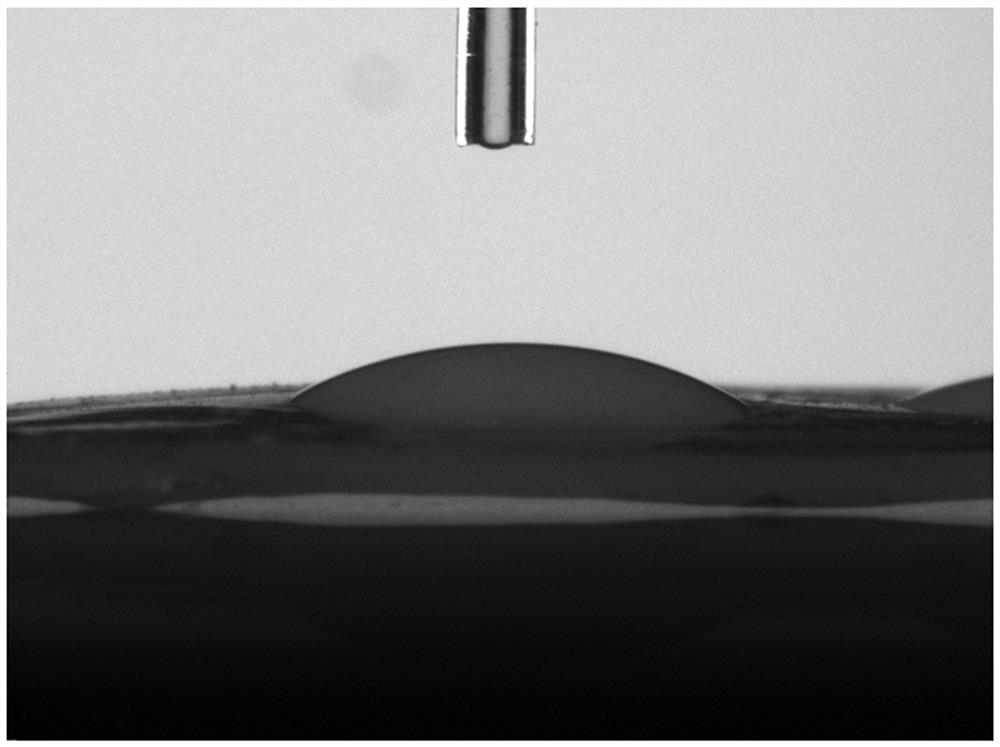Organic silicon oil with side-chain amphiphilic molecular brush structure and preparation method thereof
A technology of silicone oil and molecular brush, which can be applied to biocide-containing paints, coatings, antifouling/underwater coatings, etc. It can solve the problems of unfavorable microphase separation structure, inability to meet anti-protein adhesion, long reaction steps, etc. , to achieve the effect of inhibiting protein adhesion, improving static antifouling performance, and reducing adhesion
- Summary
- Abstract
- Description
- Claims
- Application Information
AI Technical Summary
Problems solved by technology
Method used
Image
Examples
preparation example Construction
[0029] figure 1 Shown is the synthetic roadmap for preparing side chain amphiphile brush structure organosilicon oil in the present invention, please refer to figure 1 , a method for preparing side chain amphiphile brush structure silicone oil specifically comprises the following steps:
[0030] (1) Preparation of modified silicone oil: disperse 4-8g of side-chain hydroxyl silicone oil in 4g of xylene solution, add 1-3g of chain extender and 0.01-0.05g of catalyst in an ice-water bath, and use 230-270r / Stir at a stirring speed of 1 min, and gradually raise the temperature to 40±2°C for 2 hours to synthesize the modified silicone oil;
[0031] (2) Preparation of modified fluoroalcohol: disperse 4-6g of fluoroalcohol in 4g of tetrahydrofuran, add 1-3g of chain extender and 0.01-0.05g of catalyst under ice-water bath conditions, and stir at 230-270r / min Stir and gradually raise the temperature to 40±2°C for 2 hours to synthesize the modified fluoroalcohol;
[0032] (3) Prepar...
Embodiment 1
[0042] A method for preparing side chain amphiphile brush structure silicone oil, specifically comprising the following steps:
[0043] (1), preparation of modified silicone oil: disperse 4g of side chain hydroxyl silicone oil (viscosity model is 1000) in 4g of xylene solution, add 1.1g of chain extender (isophorone diisocyanate) and 0.02g of catalyst (dibutyltin dilaurate), stirring at a stirring speed of 230-270r / min, and gradually raising the temperature to 40±2°C for 2 hours to synthesize the modified silicone oil;
[0044] (2), preparation of modified fluoroalcohol: disperse 4g perfluorobutanol in 4g tetrahydrofuran, add 1.1g chain extender (isophorone diisocyanate) and 0.02g catalyst (dilauric acid diisocyanate) under ice-water bath condition Butyl tin), stirring at a stirring speed of 230-270r / min, and gradually raising the temperature to 40±2°C for 2 hours to synthesize the modified fluoroalcohol;
[0045] (3), preparation of silicone oil with side chain amphiphile br...
Embodiment 2
[0047] A method for preparing side chain amphiphile brush structure silicone oil, specifically comprising the following steps:
[0048] (1) Preparation of modified silicone oil: disperse 4.7g of side-chain hydroxyl silicone oil (viscosity model: 3000) in 4g of xylene solution, add 1.3g of chain extender (hexamethylene diisocyanate) under ice-water bath conditions Mix with 0.02g of catalyst (stannous octoate), stir at a stirring speed of 230-270r / min, gradually raise the temperature to 40±2°C for 2 hours, and then synthesize the modified silicone oil;
[0049] (2), preparation of modified fluoroalcohol: disperse 4.4g perfluorohexanol in 4g tetrahydrofuran, add 1.3g chain extender (hexamethylene diisocyanate) and 0.02g catalyst (stannous octoate ), stirred at a stirring speed of 230-270r / min, and gradually raised the temperature to 40±2°C for 2 hours to synthesize the modified fluoroalcohol;
[0050] (3), preparation of silicone oil with side chain amphiphile brush structure: W...
PUM
 Login to View More
Login to View More Abstract
Description
Claims
Application Information
 Login to View More
Login to View More - R&D
- Intellectual Property
- Life Sciences
- Materials
- Tech Scout
- Unparalleled Data Quality
- Higher Quality Content
- 60% Fewer Hallucinations
Browse by: Latest US Patents, China's latest patents, Technical Efficacy Thesaurus, Application Domain, Technology Topic, Popular Technical Reports.
© 2025 PatSnap. All rights reserved.Legal|Privacy policy|Modern Slavery Act Transparency Statement|Sitemap|About US| Contact US: help@patsnap.com



